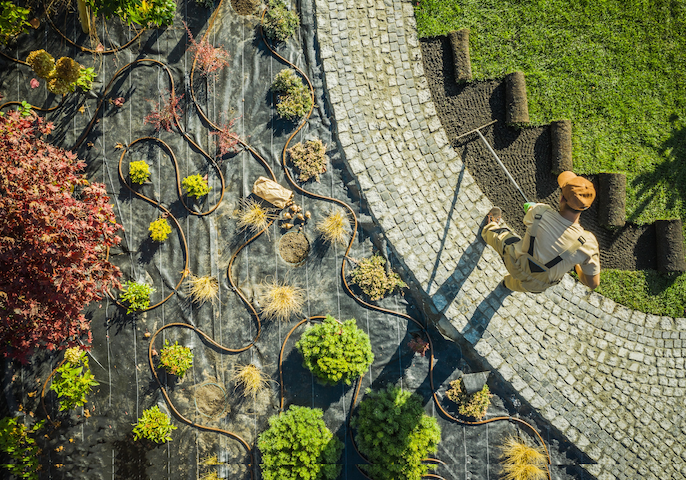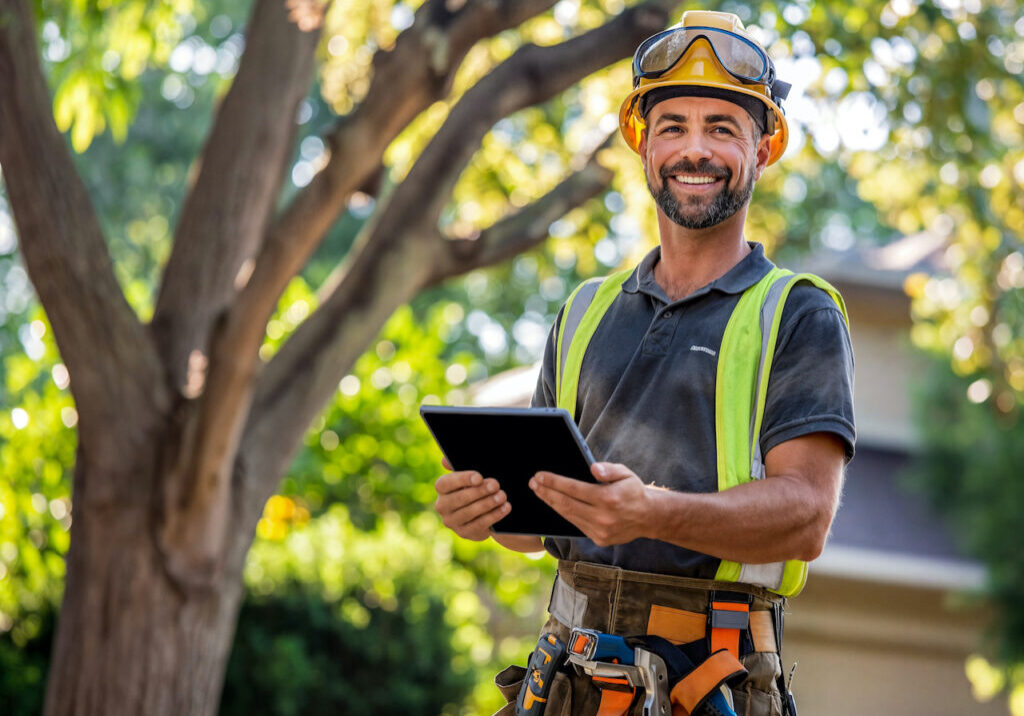What is Sustainable Landscaping Management?

It seems that today more than ever before, individuals and businesses are becoming more focused on their sustainability. Sustainable landscaping management uses specific methods that will lower the number of valuable resources that are required for landscaping. The goal of this is to lower the overall negative impact on the environment.
With sustainable landscaping management practices, reusable and renewable resources are used. Sustainability, in general, isn’t something that is only focused on one specific industry. It is something that everyone can participate in so that the environment will become more protected.
The Goals & Principles of Sustainable Landscaping Management
One of the main goals of sustainable landscaping management that were previously discussed is to not only minimize the number of resources that are being used but also to keep the amount of waste at a bare minimum. Because of this, water is treated as a precious resource, the soil is highly valued, and the conservation of materials used is paid close attention to.
Greywater systems are a common practice of sustainable landscaping management. The method to this is the recycling of non-potable water gathered from tubs, sinks, showers, dishwashers, and washing machines. This water is then displaced into landscaping irrigation systems. Using recycled products can go a long way in landscaping. Materials like rubber, glass, wood, and tiles can be utilized as paving stones when you are doing a driveway or to create mulch when filling in a flowerbed.
The preservation of native plants is also something that is adhered to. Native plants typically don’t need as much water in comparison to other types. They also don’t require the use of anti-pest substances that can sometimes have a negative environmental impact.
Site maintenance is another sought after goal. Organic fertilizers can be used instead of non-organic ones, earth-friendly pest management principles can be closely followed, and pruning practices that focus on the health of the plants, shrubs, and trees can be fulfilled. Sometimes invasive species can find their way into eco-systems and wreak havoc. The removal of these types of invasive species is required when you are following sustainable landscaping management principles.
Cutting Energy Costs
Cutting down on energy costs is a goal that can be accomplished in a number of different ways. Vegetation and trees can help drastically reduce the cost of energy when they are placed in a way that will provide shade to buildings in summer.
Using hybrid vehicles and other types of tools that don’t impact the environment increases fuel economy and will lower the carbon footprint emitted. Constantly using practices that aren’t sustainable can take its toll on the environment over a period of time. Ecosystems can be damaged beyond repair when soil erosion and chemical runoff get into the water sources and can cause contamination. Things like this can also pose a threat to residents. Pesticides can potentially harm wildlife and the pests that the animals are meant to focus on. Water shortages and excess pollution can occur simply from using too much water and electricity.
The Importance of Sustainable Landscaping Management
A lot of environmental issues can be solved using sustainable landscaping management. Something as simple as using a lower amount of water and less electricity will result in lower pollution while keeping utility bills at a minimum. Adequate pest control practices will keep the ecosystem safer and will create a cleaner and more protected living environment for animals.
Sustainable Design
One of the main goals that sustainable design tries to succeed in is lowering the negative impact on the environment while keeping the comfort, satisfaction, and health of individuals living in buildings high. Sustainable design has a number of different principles that are at the forefront of its mission:
- Utilizing the potential of each building site
- Keeping non-renewable energy at a minimum
- Utilizing products that are environmentally friendly
- Increasing environmental quality of the interior of buildings
Keeping a sustainable design mentality will ensure that these decisions are conscious and carefully followed throughout each and every stage of the design in the building. Negative environmental impacts will be easier to avoid while the health of each and every occupant will be at the top of the concern list. Everything in the entire design process is affected by sustainable design practices.
If everyone kept a conscious mind about what their activities can do to the environment, they would efficiently lower their carbon footprint drastically. There are close to 80 million tons of waste created in the U.K. every single year. If you look at household waste specifically, every person is responsible for around 1.35 pounds of waste every single day. There are nearly seven pounds of toxic materials in every ton of garbage in the U.S. Things like nickel, cadmium, lead, and mercury caused by batteries are among them.
It has been repeatedly stated that one of the only solutions that can be exercised in order to lower environmental harm is to stop the generation of waste before it happens. This means keeping a sustainable mind in everything that you do.
Sustainable Design and Construction Techniques
One practice that has greatly reduced the amount of waste produced in the design and construction of homes is exercising a high degree of environmental control. Cutting materials accurately lowers the amount of waste produced. Cutting sheet metal indoors lowers the chances of the heat or cold air from causing it to change shape and warp, which also lowers waste. Material selection has become stronger over the years and has given builders more choice in renewable and recycled products.
Sustainable design should be at the pinnacle and peak of your mind if you are designing and building a new project. So much of the waste created can be decreased exponentially if only a few simple practices are followed. Much of the material used today in a building is recyclable. Many window and door manufacturers produce their products with completely energy-efficient and recyclable material. This trend is only increasing, and if everyone does their part, the negative environmental impact can be drastically reduced.
Share this resource



